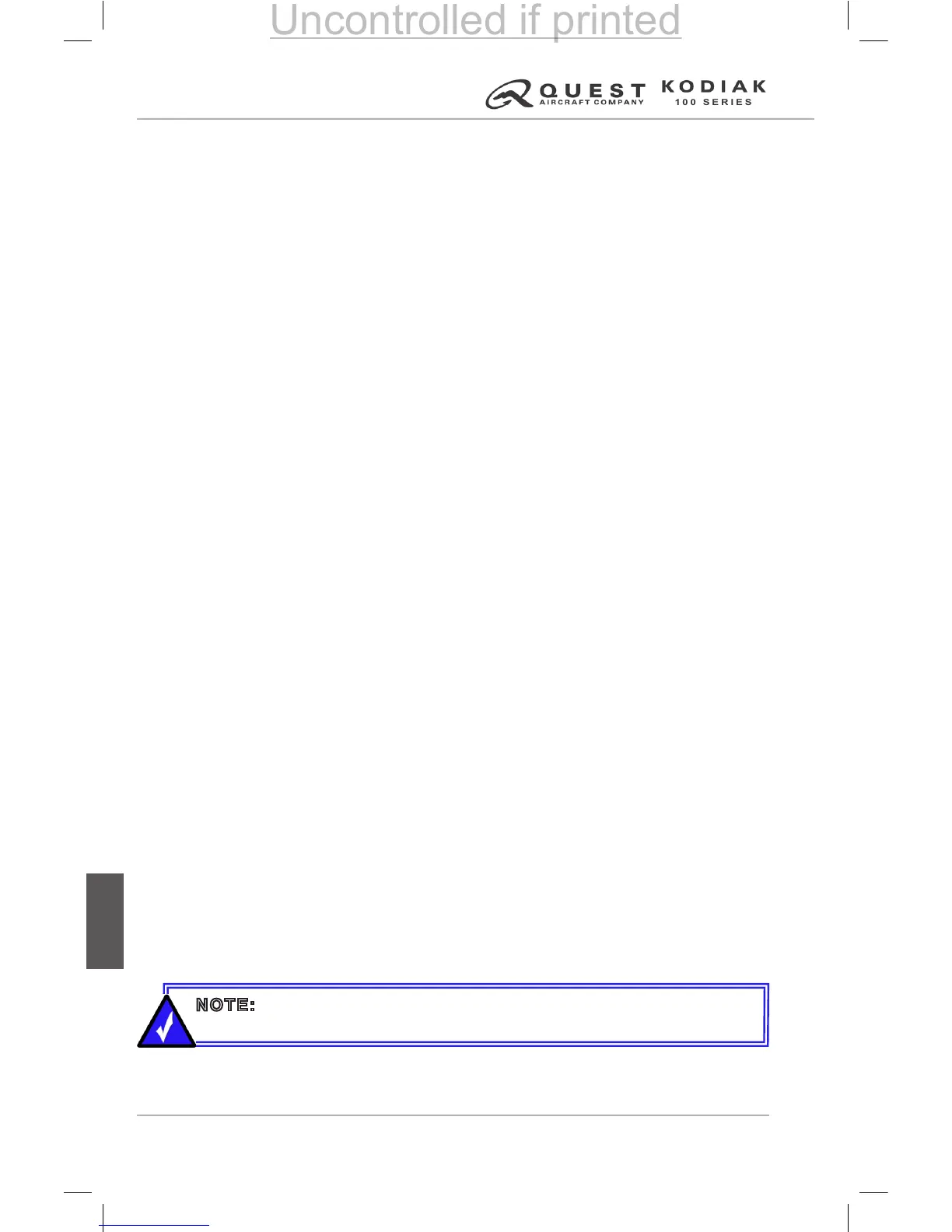Fuel Supply Line Drain Valves
The fuel lter drain valve consists of a drain pipe which can be depressed
upward to drain fuel from the lter. The fuel sampler can be used in
conjunction with these drain valves for fuel sampling and purging debris from
the system. The fuel tanks should be relled after each ight, when practical,
in an effort to minimize condensation in the fuel tanks.
Prior to each ight and following each refueling, use a clear sampler and
drain fuel from the inboard fuel tank sump quick drain valves to determine
if contamination is present in the fuel system and to verify the aircraft was
fueled with the proper fuel. If contamination is present, drain fuel from ALL
of the fuel drain points again. Repeatedly take samples from ALL of the fuel
drain points until all of the contamination has been removed. If, after repeated
sampling, there is still evidence of contamination, the fuel tanks should be
completely drained and the fuel system must be cleaned. DO NOT y the
aircraft with contaminated or unapproved fuel.
EPA FUEL RESERVOIR
Upon engine shutdown, residual fuel in the engine fuel manifold drains into an
EPA fuel reservoir mounted on the lower left portion of the cowling or on the
lower left corner of the rewall, as applicable. This reservoir should be drained
prior to the rst ight of the day or at intervals not exceeding three engine
shutdowns. A drain valve for the EPA fuel reservoir is accessible from the
bottom left side of the cowling to enable the pilot to drain the contents of the
fuel reservoir into a suitable container for proper disposal.
EPA OIL RESERVOIR (IF EQUIPPED)
This reservoir collects oil seepage from engine drive pad seals and breather
system. This reservoir should be drained prior to the rst ight of the day, or
at intervals not exceeding six engine shutdowns. A drain valve, accessible
through an access hole on the bottom left side of the engine cowling, allows
the reservoir to be easily drained into a suitable container for proper disposal.
The maximum quantity of oil discharge per hour of engine operation is as
follows:
Total for aircraft with no alternator or VCS drain
..............56 cc/hr
Total for aircraft with alternator drain, no VCS
. .. . . .. . . .. . . .. . .59 cc/hr
Total for aircraft with VCS drain
. .. . . .. . . .. . . .. . . .. . . .. . . .. . . 62 cc/hr
If the quantity of oil discharge per hour of operation is greater than that
specied, the source of excessive leakage should be identied and corrected
prior to initiating further operations.
NOTE: If the fuel and oil reservoirs are not drained on a regular basis, the
contents will ow overboard through the engine breather ejector mast.
